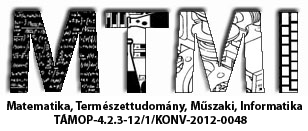Quadricuspid aortiv valve - A Case Report - Prospects for repair
Előadás adatai
Qadricuspid aortic valve (QAV) is a rare congenital malformation of the aortic valve.The incidence of QAV has been reported between .008 and .043 percent, making it the rarest malformation of the aortic valve.The most common abnormality associated with QAVs is valvular insufficiency.Other malformations include anomalies of the coronary arteries,and ventricular septal defect.The formation of a quadricuspid aortic valve is incompeletly understood.The main theory suggests septation of one of the endocardial cushions due to an inflammatory episode.Case Report:A 41-year old woman presented with a history of dyspnea on exertion.On examination,she was in NYHA functional classII.Preoperative transesophageal echocardiography showed a QAV and an enlarged ascending aorta along with grIV regurgitation.Coronarography showed no abnormality.The patient was operated on through a median sternotomy.The quadricuspid nature of the valve was confirmed.Due to the complex anatomy repairing the valve was not possible.The patient received a 22mm ATS mechanical valve.Discussion:Depending on the size of the cusps, seven anatomic variations of QAV have been described by Hurwitz and Roberts.In the present patient there were four equal size cusps all of them fibrotic and one of them fenestrated.The type of abnormality present,affects to some extent the choice of procedure used. Patients with this abnormality usually become symptomatic at a relatively young age. Replacement is not an optimal solution for these young patients,because of exposure to valve-related risks such as thromboembolism,prosthetic valve degeneration.Repair of the valve could be a promising option if a reproducible technique could reliably address the mechanism of aortic regurgitation.At present time no data have been published regarding durability of repair. Experience with bicuspid and tricuspid valves has shown that valve competence was more easily obtained with fewer coaptation lines.Other authors suggest that aortic valves with fewer or more than three coaptation lines,are less amenable to repair.However, tricuspidalization of a QAV seems to be a reproducible reconstructive approach.
Támogatók: Támogatók: Az NTP-TDK-14-0007 számú, A Debreceni Egyetem ÁOK TDK tevékenység népszerűsítése helyi konferencia keretében, az NTP-TDK-14-0006 számú, A Debreceni Egyetem Népegészségügyi Karán folyó Tudományos Diákköri kutatások támogatása, NTP-HHTDK-15-0011-es A Debreceni Egyetem ÁOK TDK tevékenység népszerűsítése 2016. évi helyi konferencia keretében, valamint a NTP-HHTDK-15-0057-es számú, A Debreceni Egyetem Népegészségügyi Karán folyó Tudományos Diákköri kutatások támogatása című pályázatokhoz kapcsolódóan az Emberi Erőforrás Támogatáskezelő, az Emberi Erőforrások Minisztériuma, az Oktatáskutató és Fejlesztő Intézet és a Nemzeti Tehetség Program



